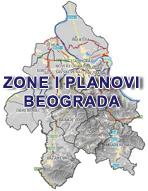Designing our future - sustainable landscapes (Source: ASLA)
Infrastructure for All
Source: American Society of Landscape Architects
Use the  icon above to adjust the sound. Select the
icon above to adjust the sound. Select the  icon above to watch in full-screen mode.
icon above to watch in full-screen mode.
To download video, go to Vimeo and login.
To download video, go to Vimeo and login.
Key Facts:
Many cities have been designed around their transportation systems, to the detriment of their own people. Now, transportation infrastructure accounts for 20-40 percent of all urban land. Even in Washington, D.C., which has invested in a range of sustainable transportation options, streets, intersections, and alleys accounts for 22 percent of all land, and once you include parking spaces, that number easily reaches 30 percent. These systems have also enabled the growth of transportation-related greenhouse gas emissions (GHGs), which now account for 30 percent of all U.S. emissions.
(Sources: Wikipedia, Washington D.C. Department of Transportation, and “Urbanism in the Age of Climate Change,”Peter Calthorpe, Island Press)
New York, San Francisco, and other cities have pioneered programs to transform streets and parking spaces into mini-plazas or “parklets.” Parklets are safe, people-friendly environments that offer inviting café-style chairs and tables, benches, and trees and plants. These spaces, which can be created for less than $20,000, encourage people to get out of their cars, walk, and interact, which helps build the local economy. In San Francisco, one new parklet increased pedestrian foot traffic by 37 percent. Some cities are also prioritizing under-served populations. In a new program, New York City is finding old parking lots and other under-used areas in communities with low per capita open space and turning them into plazas.
(Sources: City of San Francisco Planning Department Pavement to Parks Program, San Francisco Great Streets Project, and NYC Plaza Program, New York City Department of Transportation)
(Sources: Wikipedia, Washington D.C. Department of Transportation, and “Urbanism in the Age of Climate Change,”Peter Calthorpe, Island Press)
New York, San Francisco, and other cities have pioneered programs to transform streets and parking spaces into mini-plazas or “parklets.” Parklets are safe, people-friendly environments that offer inviting café-style chairs and tables, benches, and trees and plants. These spaces, which can be created for less than $20,000, encourage people to get out of their cars, walk, and interact, which helps build the local economy. In San Francisco, one new parklet increased pedestrian foot traffic by 37 percent. Some cities are also prioritizing under-served populations. In a new program, New York City is finding old parking lots and other under-used areas in communities with low per capita open space and turning them into plazas.
(Sources: City of San Francisco Planning Department Pavement to Parks Program, San Francisco Great Streets Project, and NYC Plaza Program, New York City Department of Transportation)
Isolated underpasses, which are often spaces for crime, are found directly below highways. As some cities know, underpasses are diamonds in the rough, ripe for polishing. For example, the city of Toronto is reusing one of its highway underpasses to create a 2.5-acre park, connecting neighborhoods and creating valuable green space in the process. Communities are redesigning other forms of infrastructure, too. Across the U.S., 19,000 miles of abandoned rail lines have been transformed into more than 1,600 walking and bicycling trails through innovative “Rails to Trails” programs. Other cities have even transformed old water infrastructure, turning polluted waterways and toxic brownfields into new developments that spur economic growth. All of these approaches may be more environmentally sustainable than simply pulling down and disposing of old infrastructure.
(Sources: Waterfront Toronto and Rails-to-Trails Conservancy)
(Sources: Waterfront Toronto and Rails-to-Trails Conservancy)



Коментари
Постави коментар
Ovde možete ostaviti vaš komentar i sugestije